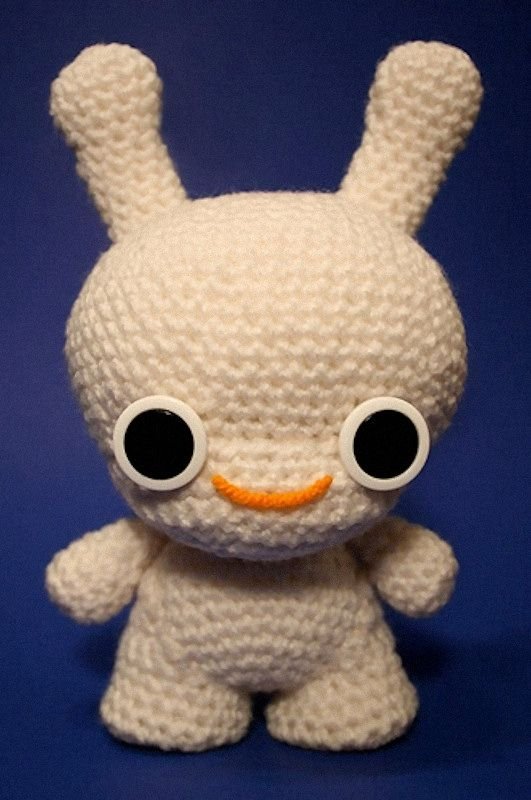|
|
Knitted Art By Nicole Gastonguay
|
Cable needles are a special case of dpns, although they usually are not straight, but dimpled in the middle. Cable needles are typically very short (a few inches), and are used to hold stitches temporarily while others are being knitted. Cable patterns are made by permuting the order of stitches; although one or two stitches may be held by hand or knit out of order, cables of three or more generally require a cable needle.
The third needle type consists of circular needles, which are long, flexible double-pointed needles. The two tapered ends (typically 5 inches (130 mm) long) are rigid and straight, allowing for easy knitting; however, the two ends are connected by a flexible strand (usually nylon) that allows the two ends to be brought together. Circular needles are typically 24-60 inches long, and are usually used singly or in pairs; again, the width of the knitted piece may be significantly longer than the length of the circular needle. Special kits are available that allow circular needles of various lengths and diameters to be made as needed; rigid ends of various diameters may be screwed into strands of various lengths. The ability to work from either end of one needle is convenient in several types of knitting, such as slip-stitch versions of double knitting. Circular needles may be used for flat or circular knitting. The current holder of the Guinness World Record for Knitting with the Largest Knitting Needles is Julia Hopson of Penzance in Cornwall.
Some ancillary tools used by hand-knitters. Starting from the bottom right are two crochet hooks, two stitch holders (quasi-safety pins), and two cable needles in pink and green. On the left are a pair of scissors, a yarn needle, green and blue stitch markers, and two orange point protectors. At the top left are two blue point protectors, one on a red needle.
|
|









